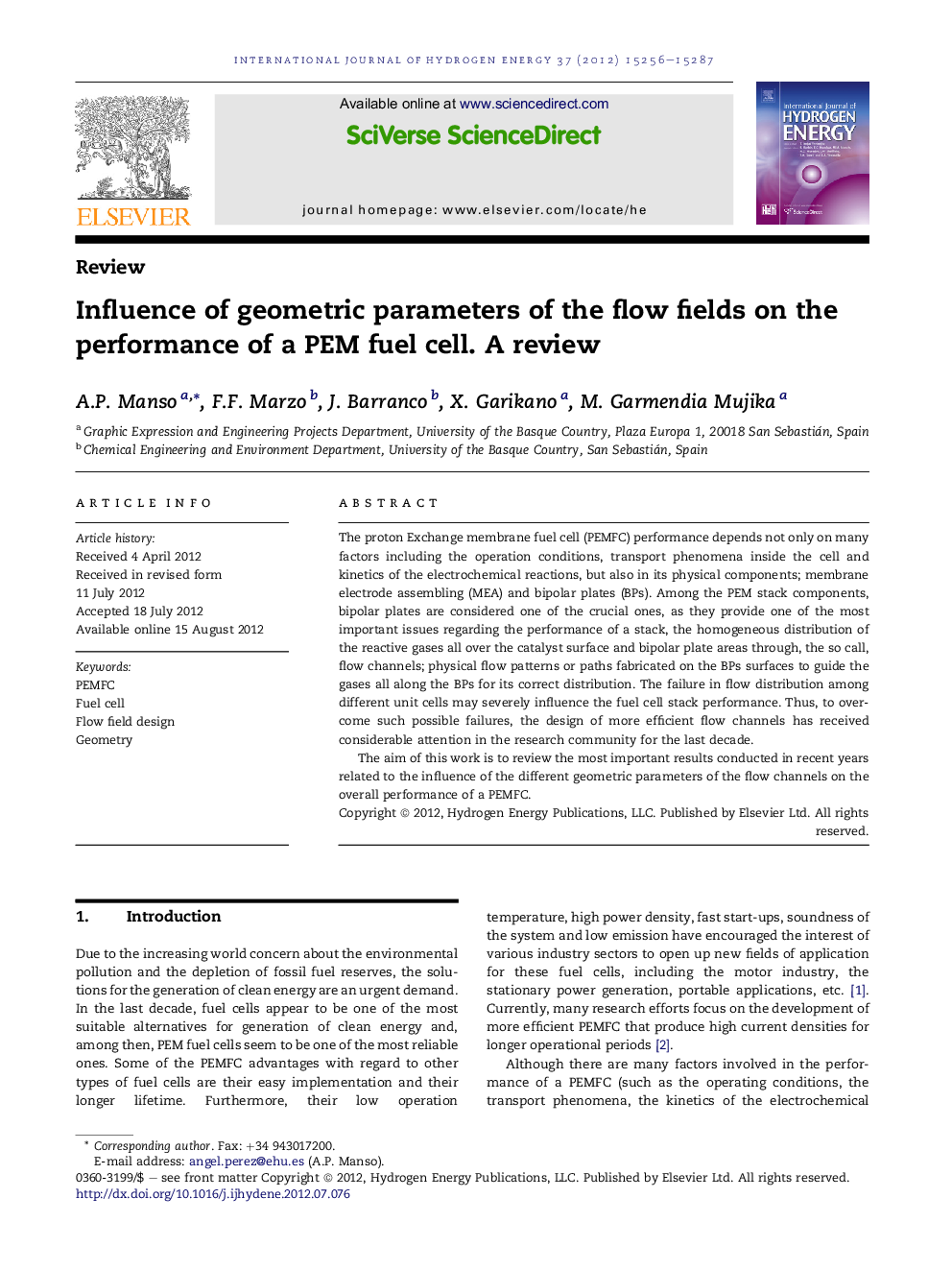| Article ID | Journal | Published Year | Pages | File Type |
|---|---|---|---|---|
| 1274535 | International Journal of Hydrogen Energy | 2012 | 32 Pages |
The proton Exchange membrane fuel cell (PEMFC) performance depends not only on many factors including the operation conditions, transport phenomena inside the cell and kinetics of the electrochemical reactions, but also in its physical components; membrane electrode assembling (MEA) and bipolar plates (BPs). Among the PEM stack components, bipolar plates are considered one of the crucial ones, as they provide one of the most important issues regarding the performance of a stack, the homogeneous distribution of the reactive gases all over the catalyst surface and bipolar plate areas through, the so call, flow channels; physical flow patterns or paths fabricated on the BPs surfaces to guide the gases all along the BPs for its correct distribution. The failure in flow distribution among different unit cells may severely influence the fuel cell stack performance. Thus, to overcome such possible failures, the design of more efficient flow channels has received considerable attention in the research community for the last decade.The aim of this work is to review the most important results conducted in recent years related to the influence of the different geometric parameters of the flow channels on the overall performance of a PEMFC.
